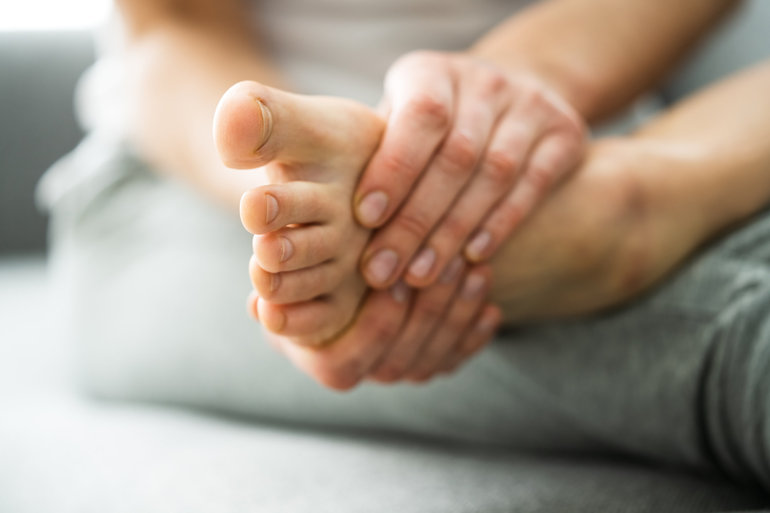The Centers for Advanced Orthopaedics is redefining the way musculoskeletal care is delivered across the region with locations throughout Maryland, DC, Virginia and Pennsylvania.
5 Foot Problems That Only Get Worse If Ignored

We don’t tend to pay a lot of attention to our feet, and that can be an issue if we ignore the early warning signs of a problem. If we overlook issues in their infancy, not only do symptoms tend to get worse, but treatment success likelihood suffers as conditions become more severe. That’s why it’s so important to treat issues before they snowball, and there are a number of foot conditions that will likely get worse if you don’t proactively treat them. We spotlight five of those foot problems in today’s blog.
Which Foot Issues Get Worse If They Aren’t Treated?
There are a number of foot problems that only tend to get worse unless they are proactively treated with some conservative options. Here’s a look at five of the most common foot problems we help treat that tend to get worse without intervention.
- Bunions - Bunions are extremely common because they are often brought on by ill-fitting shoes. High heels and narrow-toed shoes are notorious for putting abnormal stress on the front of your feet, and that can lead to a shift in the location of your big toe joint. Left untreated, stress will continue to displace the big toe joint and more pain will follow. Switching shoes and conducting some foot strengthening exercises can prevent continued shifting and reduce or eliminate symptoms.
- Hammertoes - Hammertoes are caused by pressure on our toes that cause them to bend upwards. Over time, these toe joints can stiffen and your hammertoes become constant. This can make it difficult or uncomfortable to wear shoes. Intervening before the joints and ligaments become rigid is a must. Shoes that are too tight can force our toes into this bent position and cause slow damage, so it’s very important to have shoes that provide enough room for your toe box.
- Ankle Sprains - The pain from an ankle sprain may fade over time, even without targeted treatment, but a problem could be brewing underneath the surface. Moderate or severe ankle sprains can cause ligament stretching and damage, and that can put you at a heightened risk for future ankle sprains. If your ankle feels unstable or you find that you’re rolling your ankle more frequently following a previous ankle injury, talk to a foot specialist about strengthening these injured ankle ligaments.
- Plantar Fasciitis - Plantar fasciitis is categorized by inflammation of the thick band of tissue that runs on the underside of your foot from your heel to your toes, and it requires targeted treatment to alleviate the issue. Continuing to go about your day as normal won’t do anything to quell the inflammation, and prolonged inflammation can damage the tissue and leave you more susceptible to tearing. Physical therapy, stretching exercises and activity modification can all help to protect the area as it heals and you go about your day.
- Ankle Arthritis - You’re not going to be able to reverse ankle joint degeneration, but that doesn’t mean you should just ignore ankle arthritis. Proactive treatment in the form of physical therapy, weight management and exercise can help to calm symptoms and slow the natural degeneration that our joints experience as we age. You may not be able to turn back the clock, but you can slow further degeneration, which is just as important.
For help with any of these five foot issues, or to talk to a specialist about a different type of foot or ankle issue, reach out to the team at The Orthopaedic Foot & Ankle Center today.